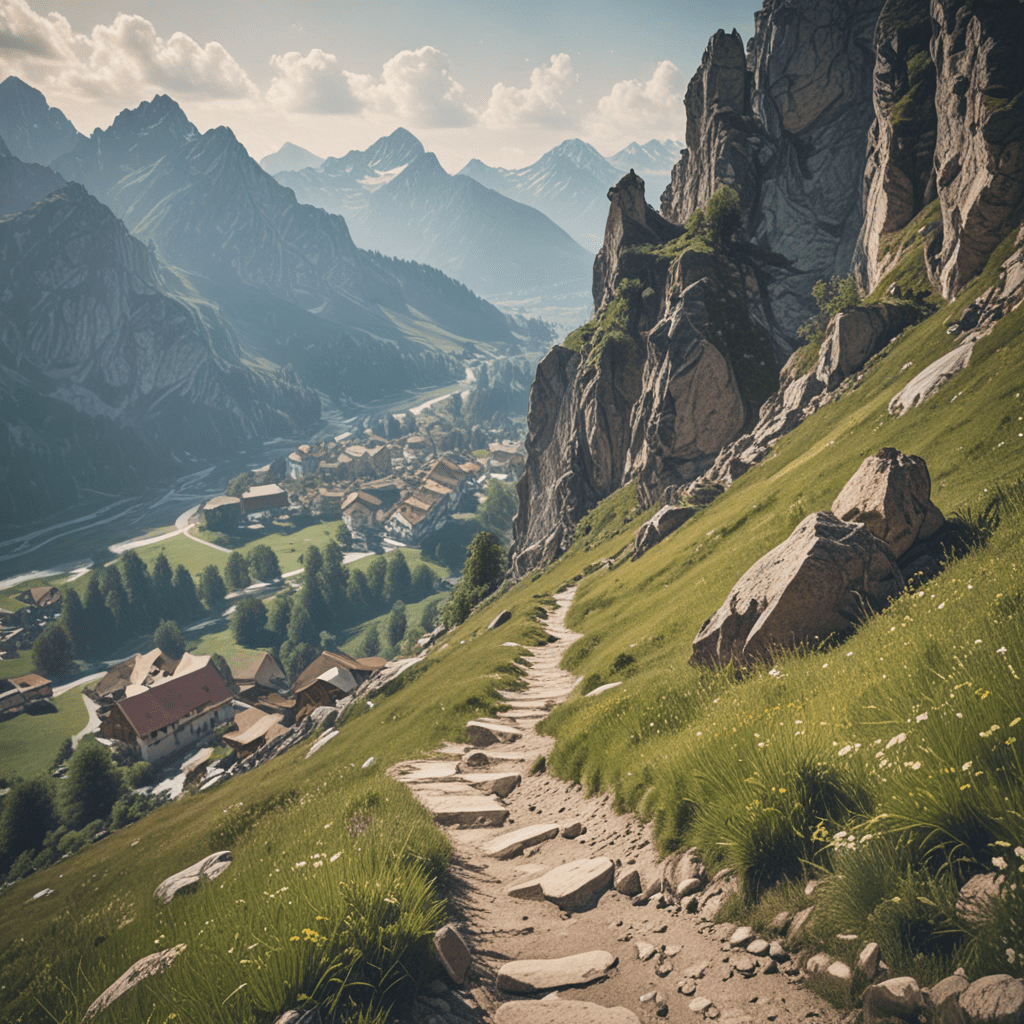
1. Introduction to the Austrian Alps
Nestled in the heart of Central Europe, the Austrian Alps beckon hikers with their towering peaks, pristine lakes, and breathtaking landscapes. From gentle trails winding through lush meadows to challenging ascents scaling rugged summits, the Austrian Alps offer an unforgettable hiking experience for nature enthusiasts of all levels.
2. Planning Your Trek: Permits, Accommodation, and Maps
Before embarking on your alpine adventure, it's essential to plan your trek meticulously. Determine the length and difficulty of your hike, and obtain any necessary permits, such as those required for camping in national parks. Book accommodations along the way to ensure a comfortable stay, and acquire detailed maps of the trails you plan to follow.
3. Essential Gear and Equipment for Alpine Hiking
Packing the right gear is crucial for a safe and enjoyable hiking experience in the Austrian Alps. Sturdy hiking boots, a waterproof jacket, and moisture-wicking clothing are indispensable. Consider carrying a backpack with ample space for essentials like food, water, a first-aid kit, and a map. Hiking poles can provide additional support and stability on uneven terrain.
4. Popular Hiking Trails in the Austrian Alps
Austria's diverse alpine region offers a wealth of hiking trails to explore. The Dachstein Region boasts glaciers, towering peaks, and scenic trails. The Grossglockner Region is home to Austria's highest mountain, offering breathtaking summit views. The Wilder Kaiser Region showcases majestic limestone peaks and panoramic vistas.
5. The Dachstein Region: Glaciers, Peaks, and Scenic Trails
Nestled in the northern Austrian Alps, the Dachstein Region is renowned for its incredible natural beauty. Hike along the Dachstein Glacier, a mesmerizing ice field surrounded by jagged peaks. Ascend the iconic Hoher Dachstein mountain for panoramic views of the surrounding landscape. Follow the Five Fingers viewing platform, suspended above a sheer cliff face, for a truly unforgettable experience.
6. The Grossglockner Region: Austria's Highest Mountain and Breathtaking Summit
Venture into the heart of the Hohe Tauern National Park to the Grossglockner Region. Here, towering over the landscape stands Austria's highest peak, the Grossglockner. Embark on challenging ascents to the summit, taking in panoramic vistas of the surrounding glaciers and rugged terrain. For a more leisurely experience, hike along the scenic trails at the base of the mountain, marveling at cascading waterfalls and alpine meadows in bloom.
7. The Wilder Kaiser Region: Majestic Limestone Peaks and Panoramic Views
Nestled amidst the Kitzbühel Alps, the Wilder Kaiser Region offers an awe-inspiring backdrop for hiking enthusiasts. Ascend majestic limestone peaks, such as the Ellmauer Halt and the Scheffauer, to witness breathtaking panoramic views. Explore the region's network of well-maintained trails, winding through dense forests and alpine pastures. Discover hidden lakes and cascading waterfalls, adding to the allure of this picturesque hiking destination.
8. Hiking Safety in the Austrian Alps: Weather Conditions, Altitude Sickness, and Navigation
Ensure a safe and enjoyable hiking experience by being aware of potential hazards in the Austrian Alps. Monitor weather conditions closely, as they can change rapidly in mountainous terrain. Be prepared for all types of weather, from sunshine to rain or even snowfall. Acclimatize to altitude gradually to avoid altitude sickness, and take regular breaks to prevent exhaustion. Carry a map and compass or utilize a GPS device for reliable navigation, especially in remote areas.
9. Local Customs and Etiquette for Hikers
Embrace responsible hiking practices by respecting local customs and etiquette in the Austrian Alps. Greet fellow hikers with a friendly "Grüß Gott" or "Servus." Yield to hikers ascending steep trails, and offer assistance where needed. Respect private property, fences, and designated hiking paths. Avoid disturbing wildlife and minimize environmental impact by packing out all trash. Adhere to local regulations, such as leash laws for dogs and restrictions on camping in certain areas.
10. Off-Trail Exploration and Respecting the Alpine Environment
Venture beyond established trails with caution and respect for the fragile alpine environment. Stay on designated paths to avoid erosion and damage to vegetation. Adhere to Leave No Trace principles, leaving no trace of your presence in the wilderness. Pack out all waste, including toilet paper and food scraps. Respect wildlife by maintaining a safe distance and avoiding sudden movements. Help preserve the pristine beauty of the Austrian Alps for generations to come.
FAQ
What is the best time to hike in the Austrian Alps?
The best time for hiking in the Austrian Alps is during the summer months, from June to September, when the weather is generally stable and temperatures are pleasant.
How do I get to the Austrian Alps?
The nearest international airports to the Austrian Alps are Salzburg Airport (SZG), Innsbruck Airport (INN), and Munich Airport (MUC). From there, you can take a train or bus to reach your hiking destination.
What are the most challenging hikes in the Austrian Alps?
Some of the most challenging hikes in the Austrian Alps include the ascent to the summit of the Grossglockner, the Dachstein Glacier Trail, and the Watzmann Circular Trail.


